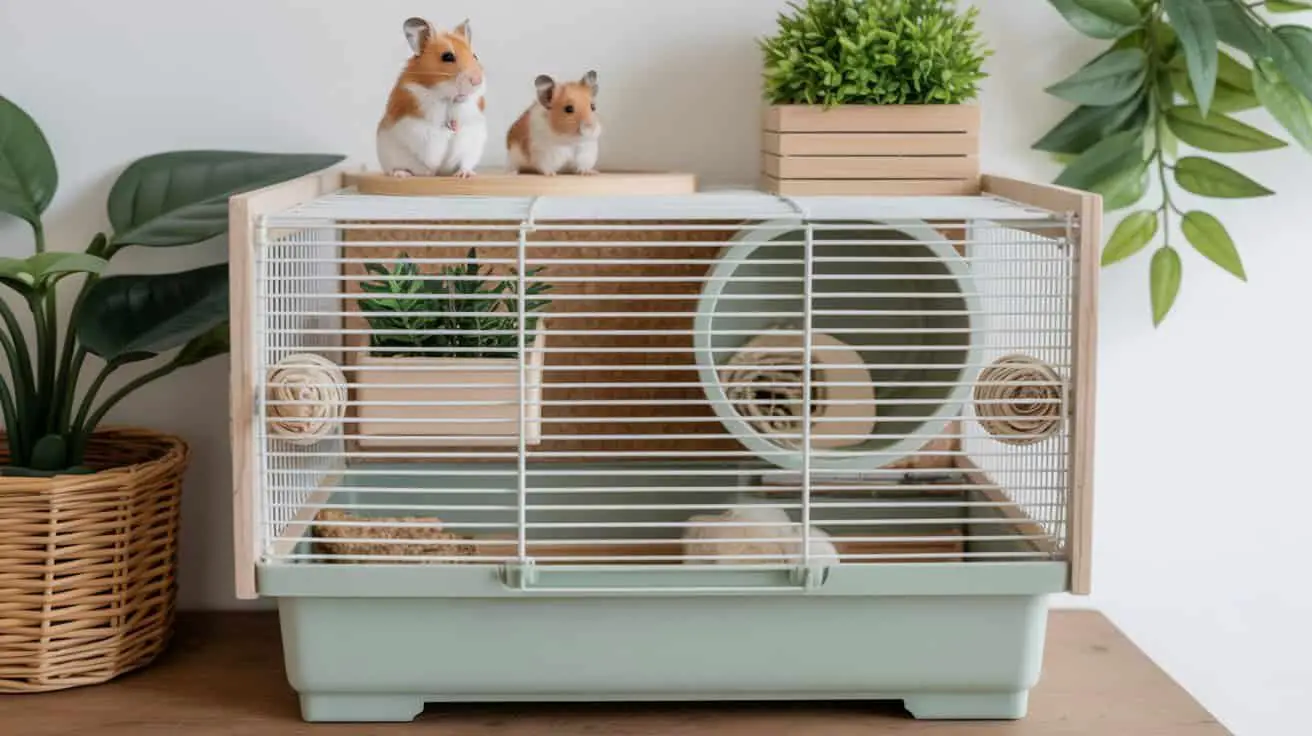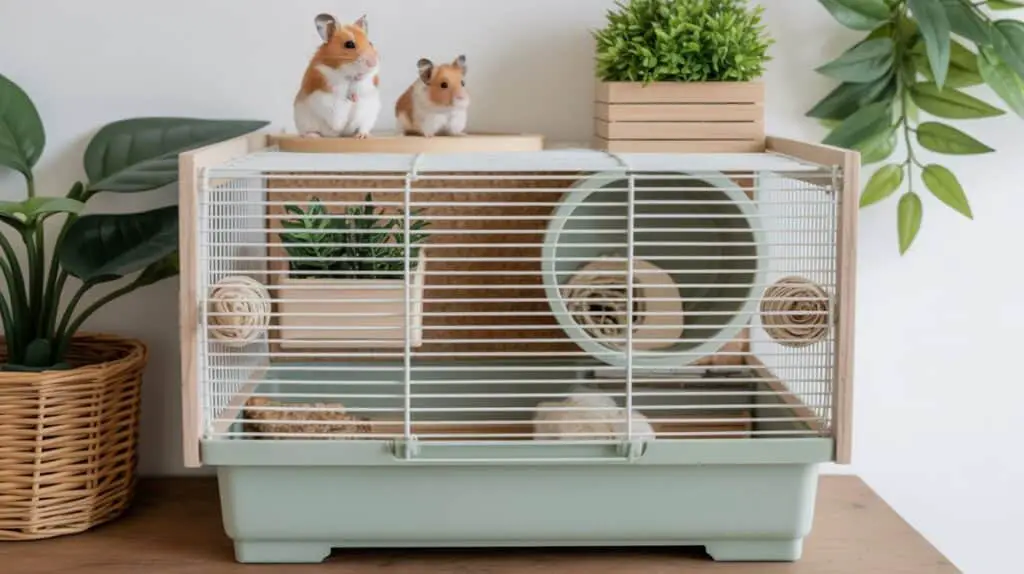
There’s something incredibly satisfying about building things for your hamster. Maybe it’s because everything’s mini-sized and adorable, or maybe it’s because store-bought cages and toys never quite get it right. Either way, once you start crafting your own hamster gear, it’s hard to stop.
Most pet stores will sell you a generic cage and call it a day — small, plastic, and… honestly, a little boring. But your hamster deserves better. DIY setups aren’t just cheaper; they’re more creative, more natural, and way more fun to look at. You can turn simple materials like wood, glass, and cardboard into a personalized little world that fits your space and your hamster’s instincts.
Whether you want to build an entire homemade hamster cage or just add a few cozy touches, there’s a DIY idea for every skill level. Here are some of the best homemade projects to make your hamster’s home safer, prettier, and way more interesting to explore.
The DIY Bin Cage Setup
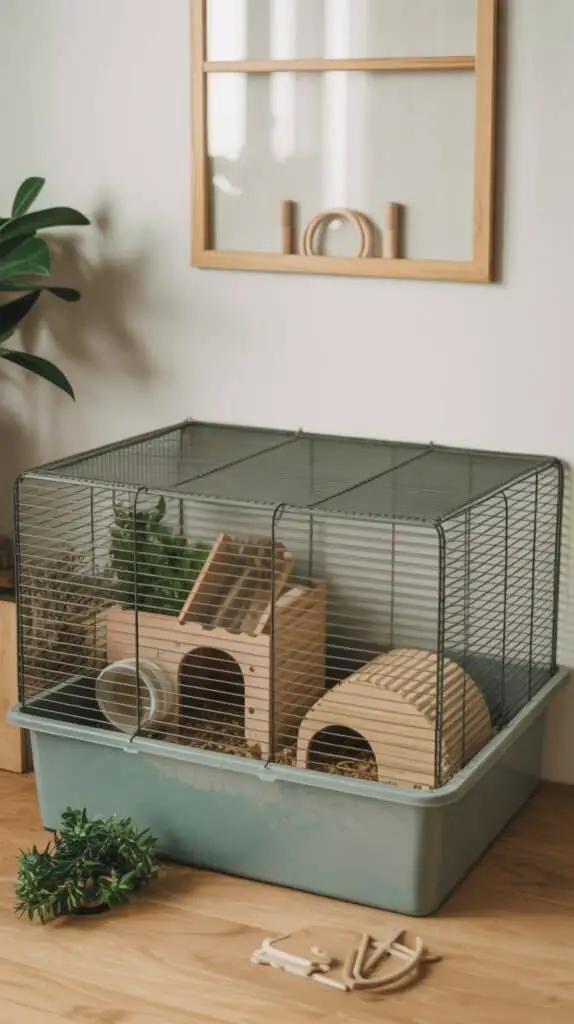
The bin cage is a classic for a reason — it’s affordable, easy to clean, and completely customizable. All you need is a large clear plastic storage bin (minimum 80–100 cm long), a mesh panel, and some basic tools.
Cut out a large section from the lid or sides, attach fine wire mesh with zip ties or screws, and you’ve got instant ventilation. Fill the bottom with at least 20 cm of bedding, add tunnels, hides, and a solid wheel, and you’re set.
To make it aesthetic, paint the outside rim with muted colors, add wooden accessories, or even line the base with a natural-colored paper liner. It’s practical, cozy, and perfect for beginners.
DIY Wooden Hamster House
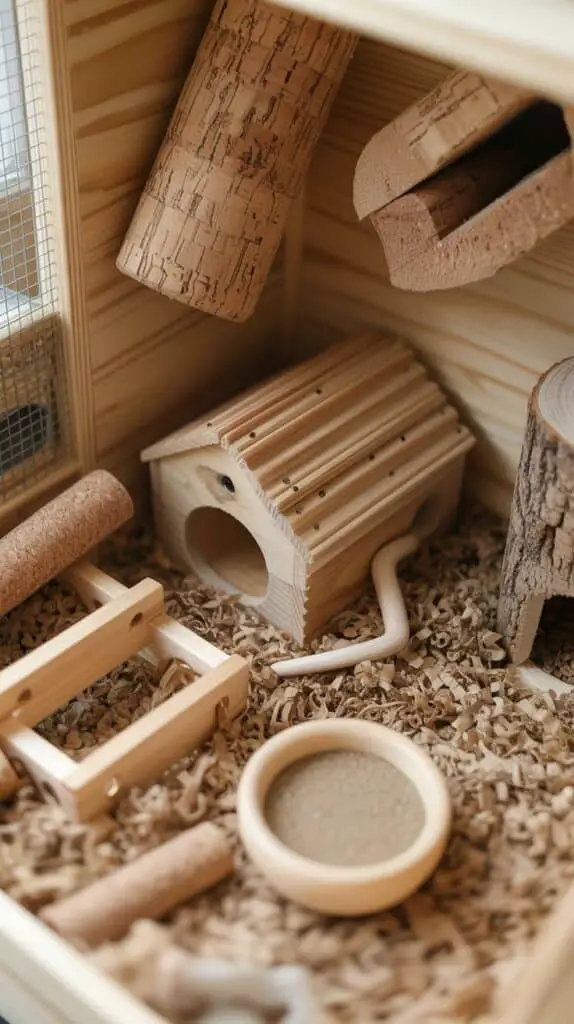
Forget plastic hideouts — a small wooden house looks better, smells better, and is healthier for your hamster. Use untreated pine, birch, or applewood to craft a cozy mini home with two or three chambers.
Make one side an enclosed sleeping area with soft bedding, and the other a tunnel-style entrance for easy access. You can even add a tiny “attic” or flat roof as a lookout spot. Sand all edges smooth, and skip nails — use wood glue for safety.
The result? A natural, breathable, and visually beautiful little house that blends seamlessly into any hamster terrarium.
Homemade Hamster Toys from Natural Materials
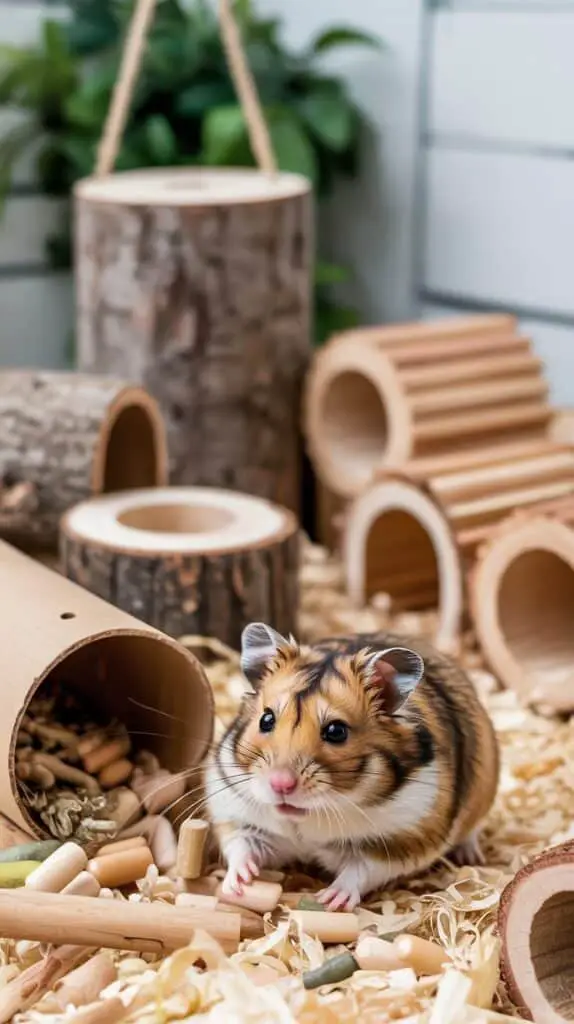
Store-bought hamster toys are often plastic and loud, but natural DIY toys are simple and fun to make. Try threading small wood blocks onto sisal rope for a chew garland or crafting climbing frames from driftwood, cork bark, or bamboo sticks.
To make a foraging toy, fill a cardboard tube with seeds and bedding, fold the ends, and let your hamster dig it out. You can also create a mini playground with small tunnels, bridges, and hideouts made entirely from natural wood and twine.
These toys don’t just look good — they’re mentally enriching and safe to chew.
DIY Glass Hamster Terrarium Setup
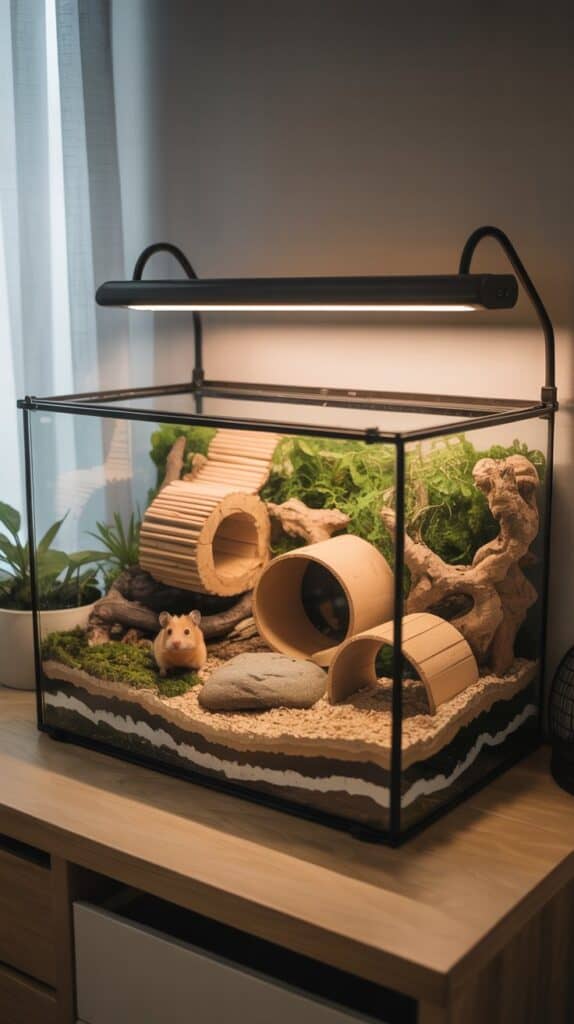
If you want something that doubles as home décor, a glass terrarium is the way to go. Large fish tanks (100 cm minimum) or repurposed reptile enclosures make perfect hamster habitats — airy, spacious, and easy to customize.
Line the bottom with layers of bedding, sand, and moss for texture. Add a natural wood hide, cork tunnels, and climbing rocks. Use warm-toned LED lights to bring out the details without overheating the space.
This setup is ideal for showcasing your hamster’s natural behaviors — burrowing, climbing, and exploring. Plus, it’s completely chew-proof and looks effortlessly modern.
DIY Aesthetic Hamster Cage Makeover
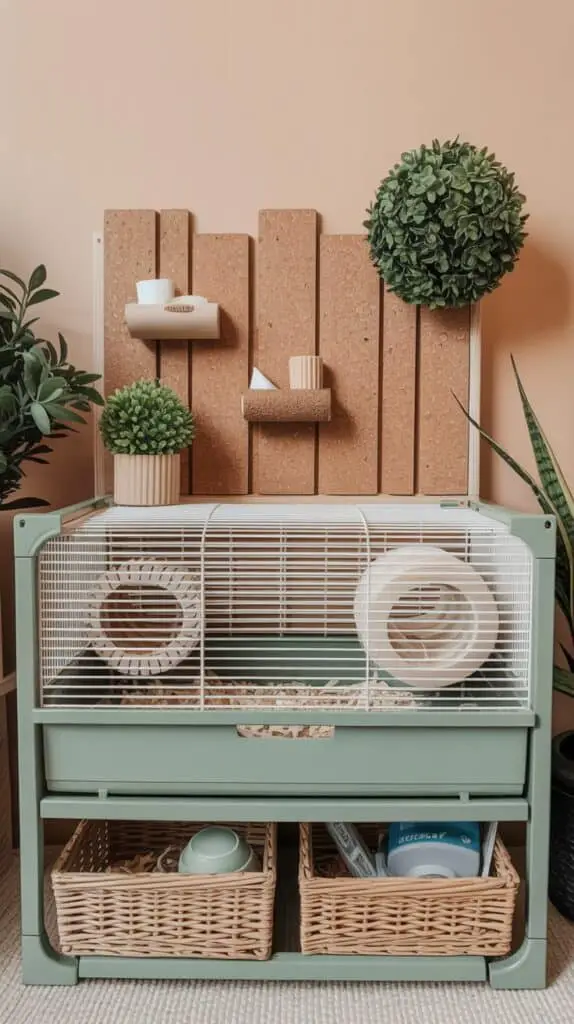
Already have a cage? You can still make it look amazing with a few small tweaks. Replace bright plastic accessories with neutral-toned wood, add mini planters with safe fake greenery, and use cork sheets or bamboo panels to create a natural backdrop.
You can even repaint the outer frame in soft beige or sage tones and hide clutter with woven baskets for supplies. The goal is to create something that feels cozy, cohesive, and peaceful — like a tiny forest retreat, not a pet shop display.
DIY Sand Bath Corner or Digging Zone
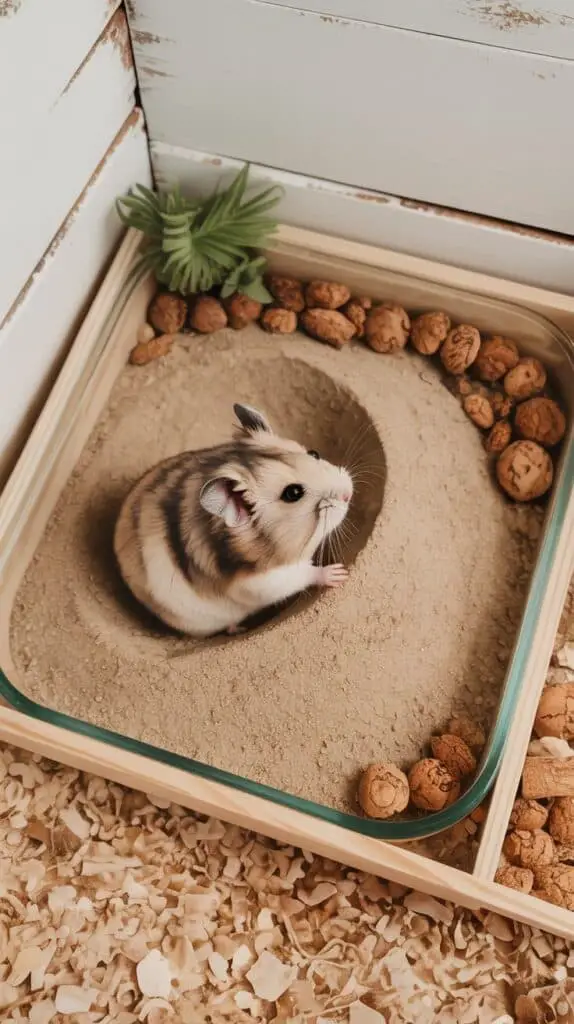
Every hamster loves to dig and roll in sand. Create a DIY sand bath using a glass baking dish or wooden box filled with chinchilla sand. Place it in one corner of the enclosure and surround it with small pebbles or cork bark for a natural look.
You can also dedicate a section of your hamster’s home just for burrowing — fill it with deep bedding (as much as your setup allows) and hide tunnels underneath. It keeps your hamster active and helps reduce stress.
Final Thoughts
DIY hamster setups are all about creativity, comfort, and care. You don’t need fancy tools or expensive materials — just a bit of imagination and attention to what your hamster actually enjoys.
The best hamster enclosures look natural and feel enriching, with enough space for your pet to dig, climb, and rest. Start small, experiment, and soon you’ll realize that building your hamster’s world is as rewarding for you as it is for them.
Because let’s face it — nothing beats watching your tiny architect explore a home you built with your own hands.

